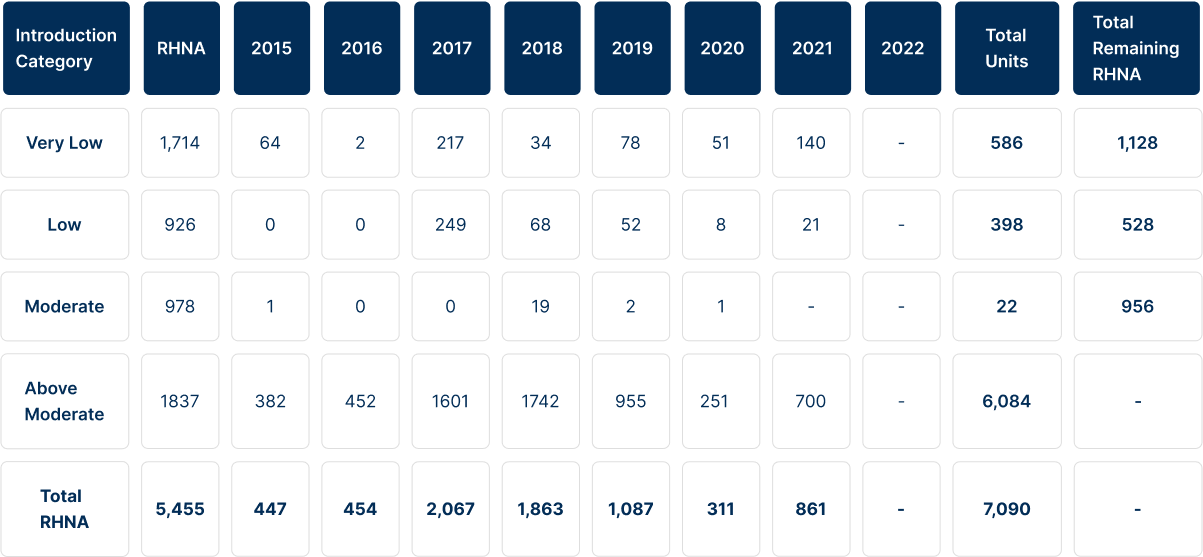YIMBY? / NIMBY?
If you’ve been paying attention to the debate about our housing crisis in California, you’ve probably heard the terms “NIMBY” and “YIMBY”
NIMBY stands for “Not In My BackYard,” and refers to people who oppose new real estate developments in their community.
YIMBY is a newer term that stands for “Yes in My Backyard”, and obviously, purports to be the opposite of NIMBY. California YIMBY is the name of an organization that advocates for more housing development – as much housing development as possible – because they believe this will help to solve the lack of affordable housing in our communities. YIMBYs argue that all housing is good housing without looking at the type of housing that the community needs, and what is best for the built environment. And their claim that simply building more housing will automatically result in lower housing prices for all is not supported by the evidence.
But unlike YIMBYs, I believe that we need to be discerning about the type of housing that gets built. Building yet more three story million dollar plus town homes in all available corners of Fremont is a net negative for our city.
I am neither a NIMBY nor a YIMBY. Unlike NIMBYs, I do believe that it is appropriate to build more housing in areas that are accessible to public transportation and that are already well-served by infrastructure and city services. As a Councilmember, I regularly voted for affordable housing projects, advocated for increasing affordable housing fees on new developments, and was a strong advocate for the homeless navigation center.
According to the Association of Bay Area Governments,
based on our current and future housing needs, Fremont should support the development of more than 3,000 units of housing that is affordable to working class families over the next 8 years (ABAG). These numbers, called the Regional Housing Needs Allocation (RHNA) numbers, are broken down by income level, indicating not just how much housing is needed, but how much is needed by each affordability level.
Below are the numbers for the last eight years for the City of Fremont. The recommended number of affordable housing units needed is 3,618 or almost two-thirds of the entire recommended number of housing units.
Table 6-1. Permitted Units Issued by Affordability

The City of Fremont approved less than a third of the number of suggested affordable units. At the same time, they approved three times the number of suggested market rate units. Another way of looking at these numbers is that the City was supposed to approve 66 percent of their units as affordable. Instead, 14 percent of what they approved was affordable.
The numbers don’t lie. Year after year, for decades, far more expensive, luxury housing than affordable housing gets built in Fremont. Every year, Fremont falls far short of its targets for affordable units, while it far exceeds the projected number of units affordable only to our wealthiest residents.
YIMBYs will argue the supply/demand argument to say that more market rate housing will lead to lower prices for all.
This makes common sense, but it is not accurate.
There is only so much land available,
especially infill properties that are closer to transit. Every parcel where market rate housing is built, is an area where affordable housing can no longer be built. Housing is not the same thing as a product sold in the local grocery store, there are limits to the supply of housing and evidence suggests that more expensive housing does nothing to lower overall housing prices.
Our pro-development city council continues to argue that we just need to keep approving more expensive town home and mansion developments with the claim that this will somehow eventually provide enough housing for all. Rather than solving the problem, we see new luxury housing developments popping up that are encroaching on wetlands and the few open spaces we have left and putting additional burdens on our roads, schools, infrastructure, and city services.
In Fremont, for decades we have been producing more and more expensive housing – far more than ABAG says needs to be built to accommodate demand. And yet, year after year, we continue to have an insufficient supply of homes affordable to working class people. Doing more of what we’ve been doing for the last couple of decades has continued to make the problem worse, not better. Anyone who argues that we need to keep building more luxury housing with the hope that this will somehow solve the housing affordability crisis is not being honest about reality.
Simply put, the solution to the affordable housing crisis is not to just build more market rate housing. There needs to be a dedicated effort to meet the affordable housing demands of those who are struggling the most to afford decent housing.
